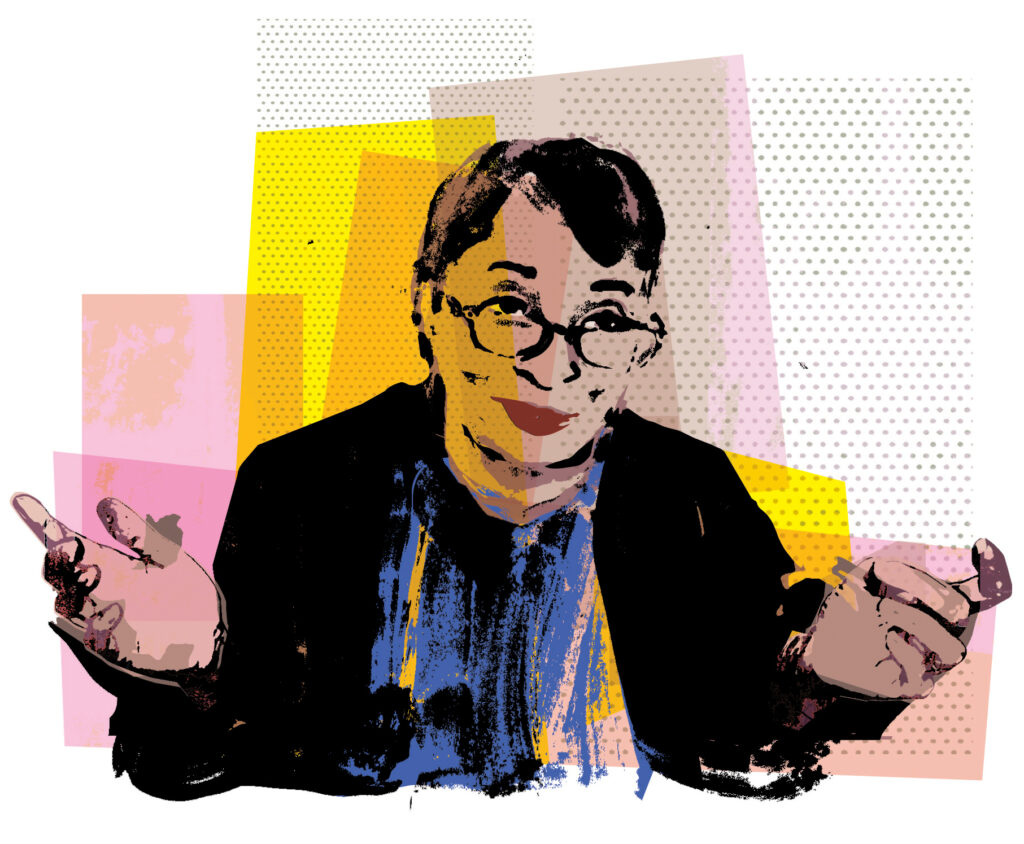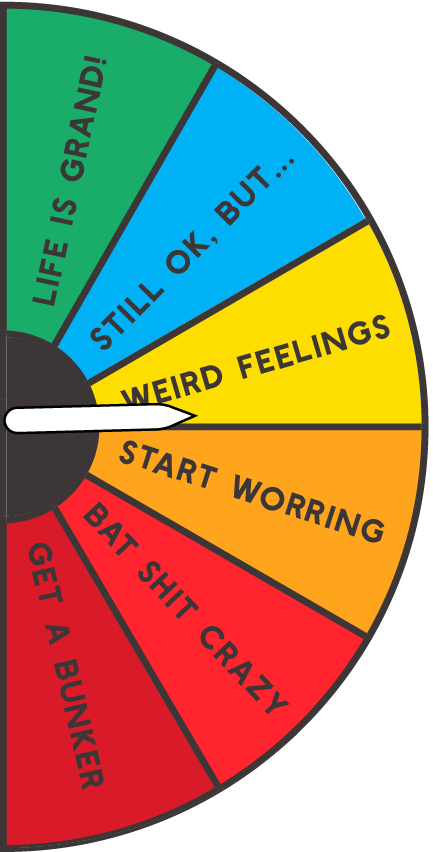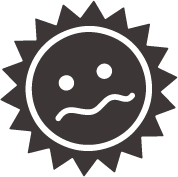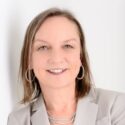Volcanoes are erupting in The Philippines, but on-fire Australia received some welcome rain. The Iran war cries have been called off and The Donald’s military powers are about to be hamstrung by the Senate. Meanwhile, his impeachment trial is starting, and we’re all on Twitter for a front-row seat.
“Libraries Are That Safe Place for Discussion of Ideas.”
Librarian of Congress Carla Hayden discusses the dynamic and essential role libraries play in American life.

This interview was originally published in Issues in Science and Technology.
Carla Hayden is the first woman and the first African American to lead the Library of Congress. In addition to preserving millions of books, newspapers, films, photographs, audio recordings, maps, and manuscripts in its collections, the library—the world’s largest—also serves as the main research arm of the US Congress and houses the US Copyright Office. Before being sworn in as the fourteenth librarian of Congress in 2016, Hayden held leadership roles in libraries for decades, including at the Enoch Pratt Free Library in Baltimore, the Museum of Science and Industry in Chicago, and the Chicago public library system. In an interview with Issues in Science and Technology contributing editor Molly Galvin, Hayden discusses the library’s role in informing public policy, how artificial intelligence is challenging notions of copyright, and how libraries can help fight misinformation and disinformation, strengthen communities, and maintain democracy.
You sometimes refer to yourself as an accidental librarian. What do you mean by that?
Hayden: Even though I grew up loving to read, and loving books and libraries, I didn’t really know about the profession of librarianship. I graduated with a major in history and minor in political science from Roosevelt University. I was thinking about what to do next. In between job interviews, I went to my favorite place, the central library in Chicago. Someone who had graduated with me came in and said, “Hey, you here for those library jobs? They’re hiring anybody.” I applied.
That’s what libraries still do. We bring in people with any type of undergrad degree through library technician or other entry-level positions, and we introduce them to the profession.
I got put together with a young lady who was going to graduate library school. She would do story time with children with autism. She wore jeans. It showed me that being a librarian was more than just, “Here’s a book.” I applied to graduate library school too. That’s how it all started. I’ve been a librarian ever since.
A primary mission of the Library of Congress is, of course, to serve Congress. How has the library helped inform public policy historically?
Hayden: The first librarian of Congress was appointed in 1802. The library started with about 600 law books. Think about it: you have a new nation, you have a Congress, and they need reference books. By 1812, they had 1,000 or so books. The Library of Congress was located in the Capitol then. The British used some of the books to start the fire in the Capitol in 1814. There’s still a fireplace there that has the markings of that event.
As Thomas Jefferson said, there’s no subject to which a member of Congress should not have occasion to refer.
But the destruction of the library was an opportunity. Thomas Jefferson sold his library to the nation. At that time, his was the largest personal library in the United States, with 6,000 or so volumes. As he said, there’s no subject to which a member of Congress should not have occasion to refer. It was the start of a vast collection of not only law volumes but of books on every subject in different languages.
Today the Congressional Research Service (CRS) has over 400 people who are the reference arm for Congress. It’s nonpartisan. You have experts in just about every area. There are policy experts in energy, social services, any topic. We have embedded librarians who are research people and policy experts. It’s not unusual for them to be at CRS for 20 or 25 years. They know the prior legislation. They only serve Congress and congressional staff. They’re evolving and using infographics, data analysis, and big data. They really use technology as a tool to help with the analysis of information.
We still serve Congress. That’s our primary mission—to serve as the research organization for them, but also the people that Congress serves: the American public.
How do you ensure that the Congressional Research Service stays nonpartisan in an era when so many issues are politicized?
Hayden: It’s rigorous. The analysts have a code of honor and ethics that their personal views and feelings about subjects should not interfere with how they present the information.
The analysts only analyze what is there. The challenge is that they have to maintain the rule of not giving an opinion. They try to be balanced. And they do have those layers of reviews of the reports—like a journal where you have review panels. No reports ever go straight to a congressional office without being reviewed by our senior analysts.
One of the analysts told me she was asked to do a report on a subject that she personally felt strongly about. When the report was delivered to the congressional office, they thought she felt the other way. She was really proud.
You’ve said before that libraries are the cornerstone of democracy. Can you elaborate on that?
Hayden: One of the principles of democracy is an informed citizenry—when you have that ability to have free and unbiased provision of information. Libraries are a trusted source. We are giving citizens an opportunity to have the information to make those informed decisions. That’s why we say it’s a cornerstone in communities. Let the books battle it out on the shelves. We have different perspectives, and you can choose.
Let the books battle it out on the shelves. We have different perspectives, and you can choose.
Public trust in many institutions has been declining in recent years, but polls indicate that most people still trust libraries. Why is that?
Hayden: Even libraries now are being questioned and especially librarians, mainly about providing materials for young people. It’s been very difficult for librarians to be drawn into that discussion because we feel that it’s every parent and caregiver’s right and responsibility. You can decide for your own child what that child is going to read. But not for other people’s children. That’s where we draw the line.
The number one information request to public libraries in this country is for health information. People would come in from their doctor’s appointment and hand us their prescriptions so we could look through the reference. We’re that trusted source—they know we’re not in it for the money, obviously. You must really stand your ground in terms of dealing with facts, and science is based on that.
The proliferation of misinformation and disinformation is very concerning to the science community. As a librarian, what is your philosophy on dealing with false or misleading information?
Hayden: We’re part of the information ecosystem—sciences and information and technology—and we just need to keep working together. We have to, because it’s hard.
We emphasize that you need to look at where the information is coming from. What’s the source? Then you determine, is that a reliable source? But misinformation and technology make it very tricky because things look legit sometimes when they aren’t.
Our websites are digital front doors. For instance, the Library of Congress website has “Ask a Librarian.” People type in their questions, and a live librarian will get back to them and do the research and go to certain sites. And they also give you the references so that you can then go to the link and do your own research. When people are asking questions, we not only give them the answer, but we give them the citation. We take this responsibility seriously.
As artificial intelligence proliferates, how is the Copyright Office dealing with the issues it raises about creative content?
Hayden: The Copyright Office and the registrar have been working with Congress about what revisions in the copyright law need to be made. This has been going on for a while because when some of those laws were developed and passed, technology wasn’t as far along. For instance, with streaming services, they worked on how to determine the rights and permissions.
For AI, the first few cases the Copyright Office encountered had to do with “Who does the copyright go to?” You have copyright whenever you create something. That’s what copyright registration does for you. But they had a test case where someone submitted something for copyright, but it was all created by a machine. The office caught it and had the person resubmit it, but where’s that dividing line for a creative work? Is it the person who programs the machine to do it? That’s where they are. Right now, copyright law says that the work has to be created by a human.
How is the rise of new technologies and the age of digital information changing library science, and how is the profession evolving?
Hayden: Today, we’re attracting people who see it as a first career. Thirty or forty years ago, people were in social work or they were in education, and then they went into librarianship. It was a second career.
We’re getting people coming in saying “We want to work with the websites. We want to do digital.” We’re now attracting people who see libraries as a testing ground for a lot of things.
Today, what used to be called library schools are information science schools or information studies. Some of our grads go straight to tech companies because they learn about search and how people think of reference questions and things. That’s our competition.
Libraries now are so much more than just the basic information. They circulate musical instruments, they circulate sewing machines, laptops, all of that. They’re really boots on the ground in communities.
But many people want to work in libraries, and what draws a lot of them is serving, and the whole concept of “knowledge is power.” You can empower and work with communities. A lot of libraries now are so much more than just the basic information. They circulate musical instruments, they circulate sewing machines, laptops, all of that. They’re really boots on the ground in communities, helping people.
In Baltimore libraries, for example, they have a lawyer in the library, a social worker in the library. You can get your passports there. You can register to vote. Some of the younger people who want to help people say, “Well, here’s a direct way to do that.”
What are some of the biggest trends you see for libraries on the horizon?
Hayden: Libraries are getting back into being a place in communities and in people’s lives. It’s “library as place.” Libraries are being built to be gathering places, places for community.
I was just out in Dayton, Ohio, and their new central library has a theater. Local theater groups can book the theater and have their performances or dance groups. There’s an art studio, a recording studio for people to come in.
Library as place is definitely a trend, and you’ll see that in new buildings and branches in communities that are incorporating all kinds of other things. Some have community kitchens. Philadelphia had one of the first libraries where you’re teaching science and chemistry by having cooking classes. You have to measure, you have to monitor temperature, and all this stuff. You’re seeing a lot of that going on.
Libraries are also being seen as a convening place for civic engagement. Community meetings are being held there, with many sides of an issue being discussed. Libraries are that safe place for discussion of ideas.
The Library of Congress social media posts and your own personal posts are drawing a lot of attention to some of the library’s amazing historical artifacts. What are some of your favorites?
Hayden: We have 178 million or so items, and we digitized about 61 million of them. That includes historic maps and all types of things. We can highlight items from our collection—from a diary to a letter or another physical item—based on what’s going on in the world.
In terms of science-specific items: we have Galileo’s treatise, The Starry Messenger. We have Carl Sagan’s papers. You can go online and see what he thought space travel would be like when he was about 12 years old. We have Sigmund Freud’s papers, and we shared some of his personal correspondence. Also, [Red Cross founder] Clara Barton’s diaries have just been transcribed. She suffered from depression, and she describes the early days of nursing.
Something that really meant a lot to me—coming from Illinois and having spent summers in Springfield, where my family’s from—is you can actually see the contents of Abraham Lincoln’s pockets the night he was assassinated. To see the handkerchief that he had and the button that he put in his pocket—it makes history come alive. We also have one of the copies of the Gettysburg Address, and they speculate that it’s the one he took on the field. You see that in his own handwriting. You can go online and see Teddy Roosevelt’s diary in his own hand and Rosa Parks’s peanut butter pancake recipe in her own hand.
That’s what social media has been doing for us. We can share this with people.



Fantastic! I’ve been thinking about writing a novel with a librarian as the protagonist. Carla Hayden would make a good study for such a character. Thank you for a very interesting interview.